|
Laister-Kauffman
Aircraft Corporation in World War Two
St. Louis, MO
1941-1946
This page added 11-6-2022.
As World War Two approached and the United
States military learned of the success of German airborne glider attacks
in May 1940 during the invasion of Belgium, there was an urgent need for
gliders in the United States. As the United States Army Glider
Program began taking shape, 27 year-old Jack Laister, a well-known
civilian glider designer since he was 14 years old, modified his 1938
Yankee Doodle single seat glider by adding a second seat. This
then became the TG-4A series of gliders that the Laister-Kauffman
company built for the U.S. Army. However, while Mr. Laister had
the design, he did not have the financing for their manufacture.
He was able to partner with St. Louis businessman John Kauffman and the
Laister-Kauffman Aircraft Corporation was born. The company came
into existence because of the need of gliders for World War Two, and
when the war ended, and production ceased in August 1945, the need for
gliders came to an abrupt end. There would be no further use for
military gliders as the age of the helicopter was beginning.
Laister-Kauffman was not fully reimbursed by the United States
government for materials it had purchased for future production, and the
company filed for reorganization under Chapter 10 of the
bankruptcy codes in September 1946. In the end, the company went
out of business. Note: A special thank you to Mr. Jim
Moffett for information on the end of the company.
Laister-Kauffman Aircraft Corporation World
War Two Production: The company had $23,075,000 in major
contracts during World War Two. For a company that did not exist
until 1941, this is an amazing amount. The demand for both
training gliders and combat gliders was of extreme urgency during the
war, as the United States Army Air Forces was playing catch-up with the
Germans. Laister-Kauffman built the TG-4A training glider and
CG-4A combat glider.
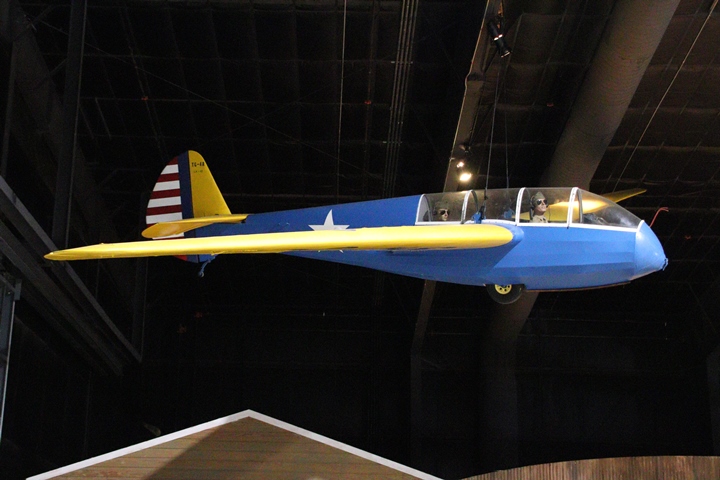
This TG-4A is on display at the Museum of
Aviation at Robbins Air Force Base, GA. While photographing the glider
during my visit to the museum, I decided to research the company and
publish this page to recognize the company's contribution to winning
World War Two. Table 2 shows that there were 150 production and
three experimental versions of this type built. These were used to
train pilots in preparation to flying the CG-4A combat glider. Author's photo.
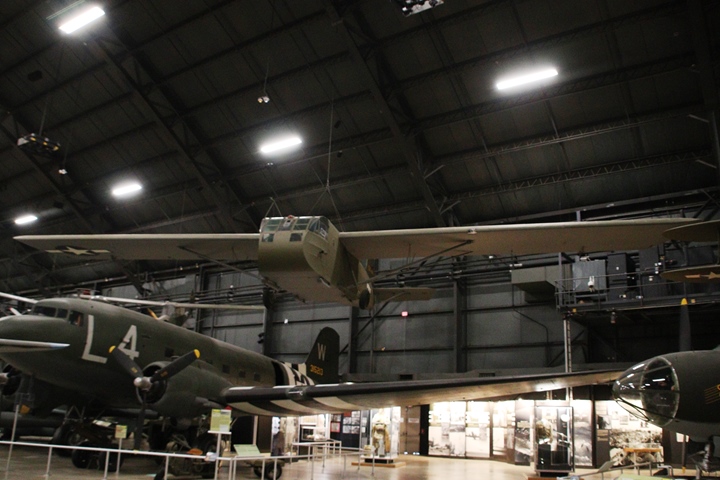
Table 2 shows that the company built 230
CG-4A combat gliders under license from the Waco Aircraft Corporation of
Troy, OH. Author's photo.
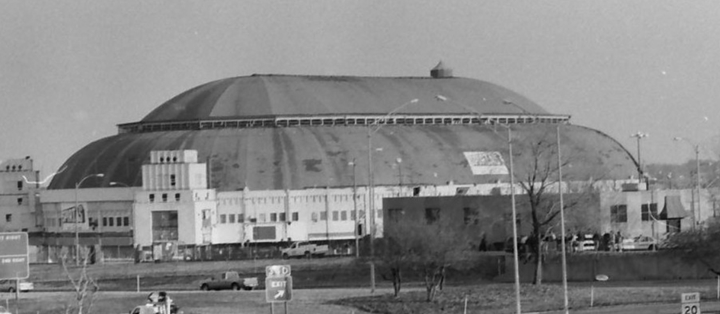
Laister-Kauffman did not have a factory and
assembled all of its gliders in the St. Louis Arena. The St. Louis
Arena opened in 1929 and was the home of the St. Louis Blues hockey team
among many other hockey and basketball teams until it closed in 1994.
It was imploded on February 27, 1999, the day this photo was taken.
The Laister-Kauffman Aviation Corporation did
not have time to build a factory. The Army Air Forces wanted its
gliders yesterday, not today. During the war, professional sports
came to a standstill and no doubt Mr. Kauffman had the proper
connections to be able to quickly occupy this space to not only build
gliders but create jobs in St. Louis.
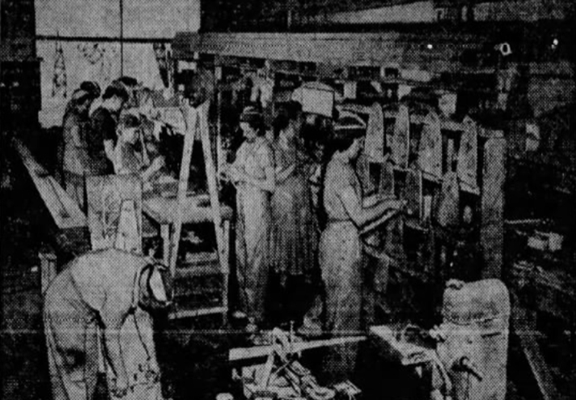
In this photo, workers are working on the rib
and wing assembly for the TG-4A glider.
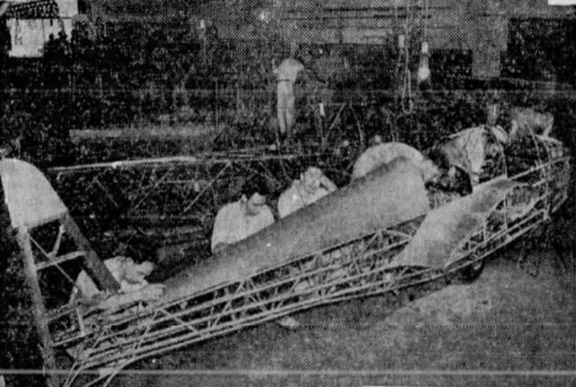
A TG-4A is shown being assembled by five
workers inside the St. Louis Arena.
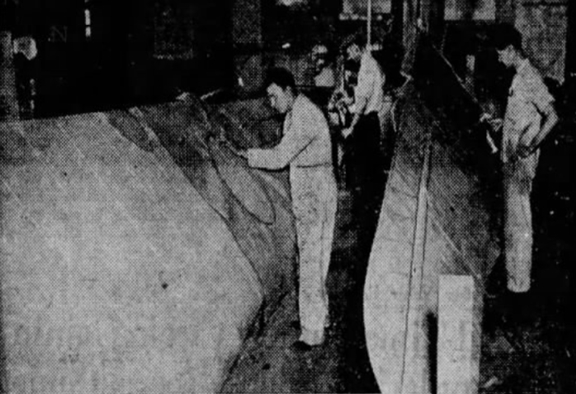
Laister-Kauffman workers are shown here doping
down a wing and adding the star and bar insignia for a DG-4A.
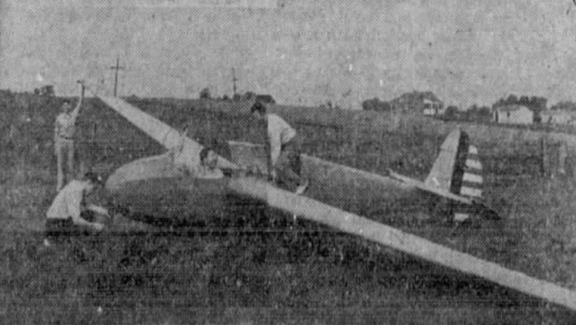
Final assembly of the wings may have taken
place at a suitable field to test the gliders before acceptance by the
Army Air Forces.
Table 1 - Laister-Kauffman
Aircraft Corporation's Major World War Two Contracts
The information below
comes from the "Alphabetical Listing of Major War Supply
Contracts, June 1940 through September 1945." This was
published by the Civilian Production Administration,
Industrial Statistics Division. |
|
Product - Customer |
Contract Amount |
Contract Awarded
|
Completion
Date |
| Gliders - USAAF |
$6,155,000 |
3-1942 |
1-1943 |
| Gliders - USAAF |
$302,000 |
3-1942 |
4-1943 |
| Gliders - USAAF |
$856,000 |
4-1942 |
9-1944 |
| Gliders - USAAF |
$301,000 |
5-1942 |
7-4193 |
| Glider Noses
- USAAF |
$267,000 |
6-1944 |
9-1944 |
| Glider Repair
Servs - USAAF |
$1,791,000 |
7-1944 |
2-1945 |
| Gliders - USAAF |
$2,071,000 |
10-1944 |
8-1945 |
| Gliders
CG-10A - USAAF |
$11,255,000 |
3-1945 |
3-1946 |
| Metal Booms -
USAAF |
$77,000 |
6-1945 |
12-1945 |
| Total |
$23,075,000 |
|
|
|
Table 2 - Laister-Kauffman
Aircraft Corporation's World War Two Glider Production |
|
U.S. Army Air Force Serial Numbers |
Type |
Quantity Built |
Comments |
| 42-61099
through 42-61100 |
XCG-10A-LK |
2 |
Laister-Kauffman
Aircraft Corporation Model LK-11B Trojan Horse 42 seat
glider. |
| 42-53022
through 42-53096 |
TG-4A-LK |
75 |
Laister-Kauffman
Aircraft Corporation LK-10A Yankee Doodle 2 tandem seat
training glider. |
| 42-53525
through 42-53526 |
XCG-10A-LK |
2 |
Laister-Kauffman
Aircraft Corporation Model LK-11B Trojan Horse 30 seat
gliders ordered April 22, 1942.
42-53525 accepted October 4, 1942. First flight
November 6, 1943. Converted to 42 seat glider.
42-53525 completed as a 42 seat glider. |
|
42-43649through 42-43678 |
CG-4A LK |
30 |
Laister-Kauffman
Aircraft Corporation Model NZR troop glider. Built
under license from the Waco Aircraft Company, Troy, OH. |
|
42-4367through 42-43753 |
TG-4A-LK |
75 |
Laister-Kauffman Aircraft Corporation LK-10A Yankee Doodle 2
tandem seat training glider. |
|
42-14705-hrough 42-14707 |
XTG-4-LK |
3 |
Laister-Kauffman
Aircraft Corporation |
| 43-42129
through 43-42228 |
CG-4A-LK |
100 |
Laister-Kauffman
Aircraft Corporation LK-10A Yankee Doodle 2 tandem seat
training glider. |
| 45-17143
through 45-17242 |
CG-4A-LK |
100 |
Laister-Kauffman
Aircraft Corporation LK-10A Yankee Doodle 2 tandem seat
training glider. |
| 45-44450
through 45-44459 |
YCG-10A |
|
Laister-Kauffman
Aircraft Corporation Model LK-11B Trojan Horse 42 seat
glider. All ten units were cancelled |
| 45-44460
through 45-454499 |
CG-10A |
|
Laister-Kauffman
Aircraft Corporation Model LK-11B Trojan Horse 42 seat
glider. 1,040 units cancelled. |
| Total |
|
387 |
|
Table 1 shows that
Laister-Kauffman was awarded a $11,255,000 contract in March 1945 for CG-10A
gliders. Table 2 shows that only four experimental XCG-10A-LK 42 seat combat gliders
were built. Table 2 also shows that ten YCG-10A test gliders and 1,040 CG-10A
production gliders were cancelled and most of the $11,255,000 was never
spent. The CG-10A was the largest American glider built during
World War Two. This was a quantum jump for a company that only
began business in 1941, but it also shows the engineering and design
ability of Jack Laister.
On August 3, 1945, it was announced in
Louisville, KY that the Laister-Kauffman Aviation Corporation was
taking over the Louisville Defense Plant at the Louisville Airport.
Previously, this plant had been occupied by the Curtiss-Wright
Corporation to build 458 C-46 twin-engine cargo aircraft. It
had fulfilled its contract with the Army Air Forces and the plant
was turned back over to the Defense Plant Corporation, which then
leased it out to the Laister-Kauffman Aviation Corporation. It
was the ideal venue in which to build the CG-10A gliders which was
basically the same size as a C-46. Employment figures were
expected to reach 1,000 employees as the large cargo gliders were
urgently needed for the upcoming invasion of Japan.
Then on August 6 and August 9, 1945
top-secret atomic bombs were dropped on Japan. On August 15,
1945, Japan surrendered. Wartime contracts were cancelled on a mass basis as there was no longer a need for more equipment.
No production CG-10A cargo gliders were ever built in Louisville,
KY.
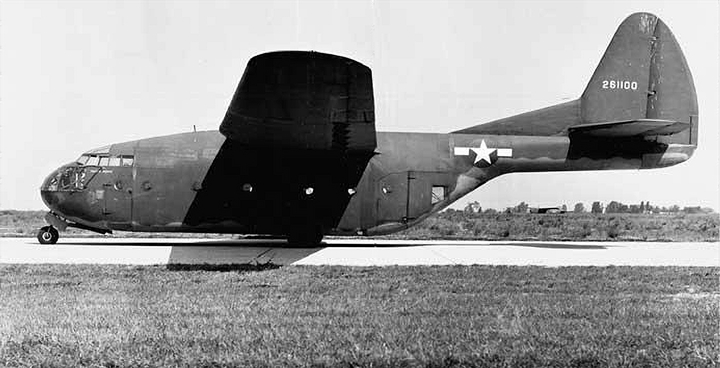
This is USAAF serial number 42-61100
which was the second Laister-Kauffman glider to be assigned a
number.
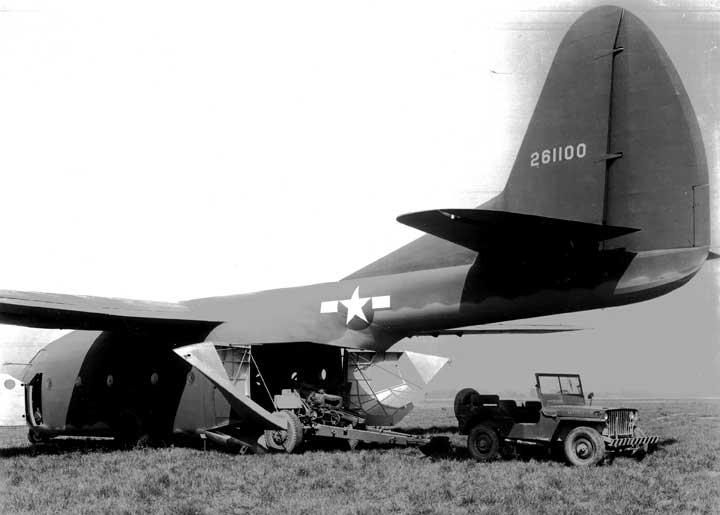
The CG-10A had rear opening clam shell
doors which allowed for easy exit of small vehicles, artillery, and
42 troops.
Laister-Kauffman TG-4A Gliders on Museum
Display:
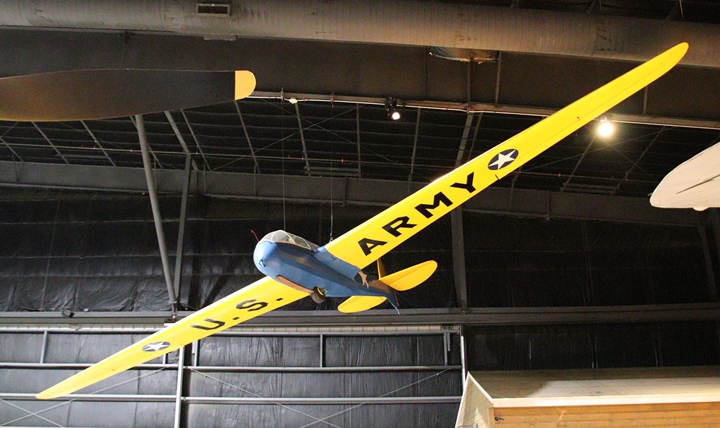
Here are four more photos showing the TG-4A
on display at the Museum of Aviation at Robbins Air Force Base, GA. The aircraft is located in the Museum's World War Two hangar.
Author's photo.
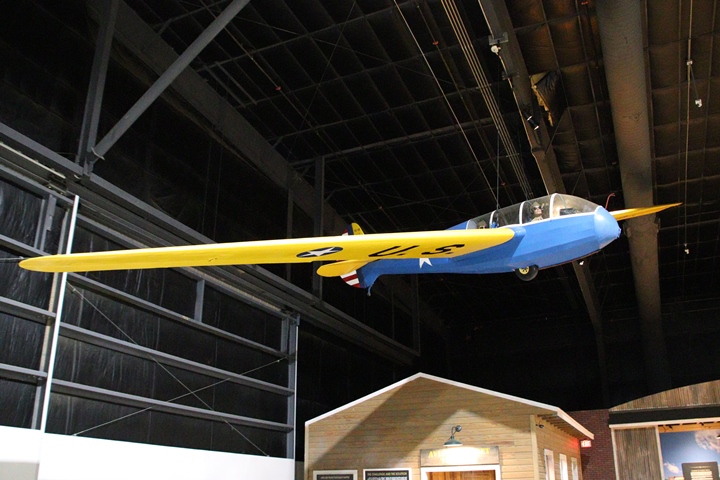
Author's photo.
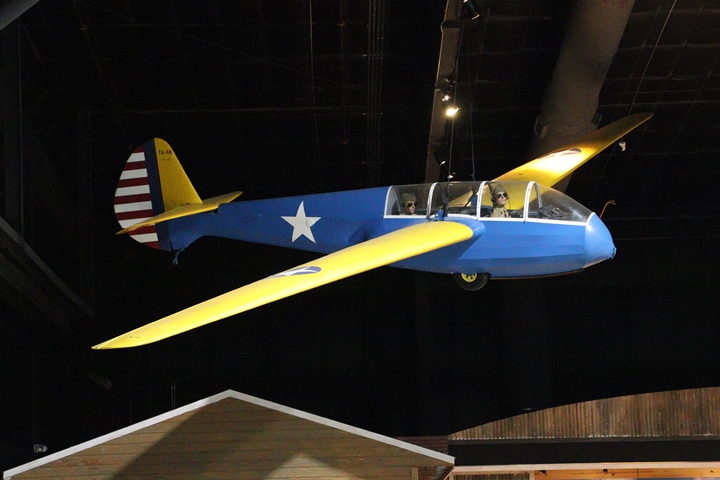
The fuselage was constructed of fabric on a welded
steel frame. The tail was made of wood with a fabric covering
while the wings were made of wood. The first one-third of the wing's
leading edge was covered with plywood and the entire wing covered in
fabric. The aircraft had a 22:1 glide ratio. Author's photo.
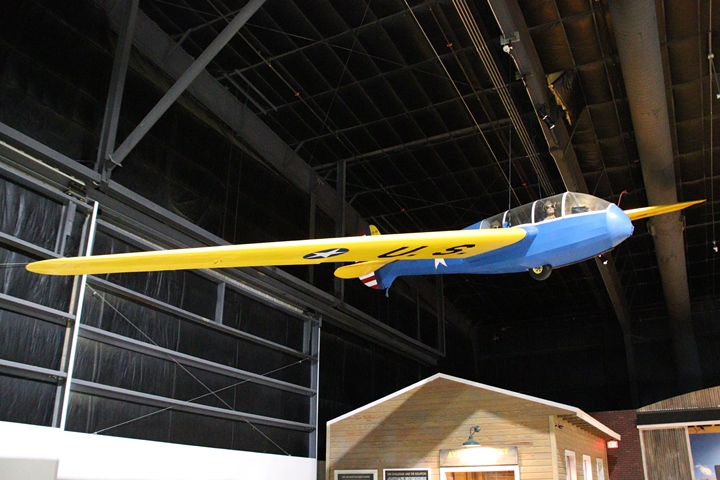
This is serial number 42-43740. Author's photo.
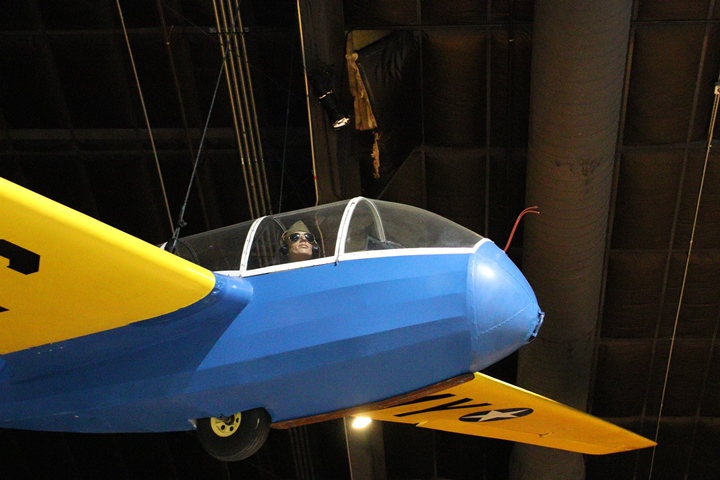
Author's photo.
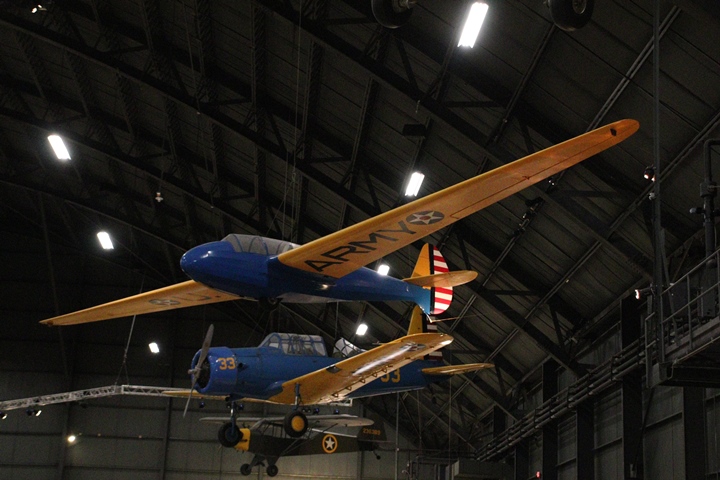
This is rather embarrassing. I have walked underneath this TG-4A
dozens of times at the National Museum of the United States Air Force
since it was placed on display in 2003 and never paid any attention to
it. It was only when I began work on this page that I realized the
Museum had this TG-4A on display. However, with over 350 aircraft
on display at the museum, it is not difficult to overlook an aircraft or
two. Author's photo.
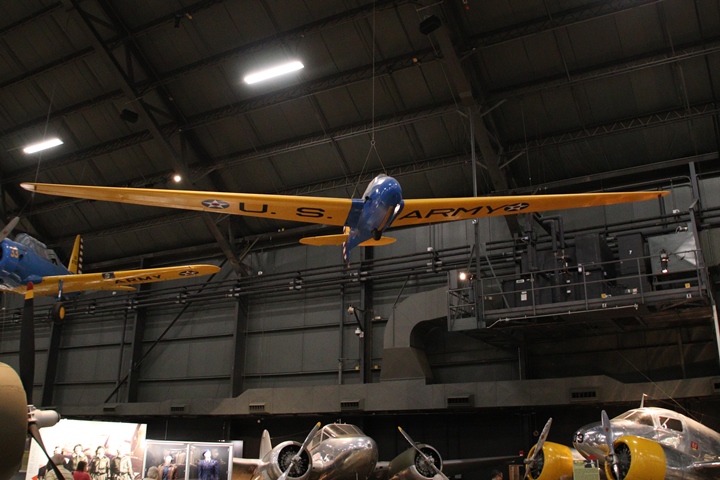
This is serial number 42-43734. Author's photo.
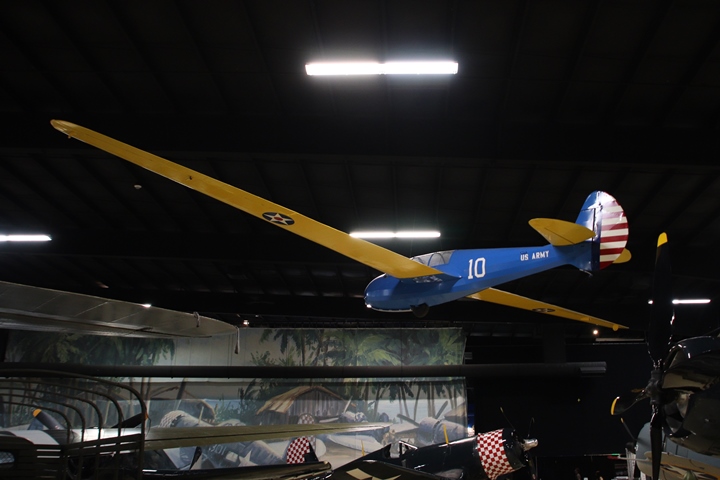
This TG-4A is on display in the World War
Two room of the Air Zoo Aerospace & Science Museum in Kalamazoo, MI.
For the photos of this TG-4A, I made a special trip accompanied by my
oldest grandson. It was his first visit to this excellent museum. Author's photo.
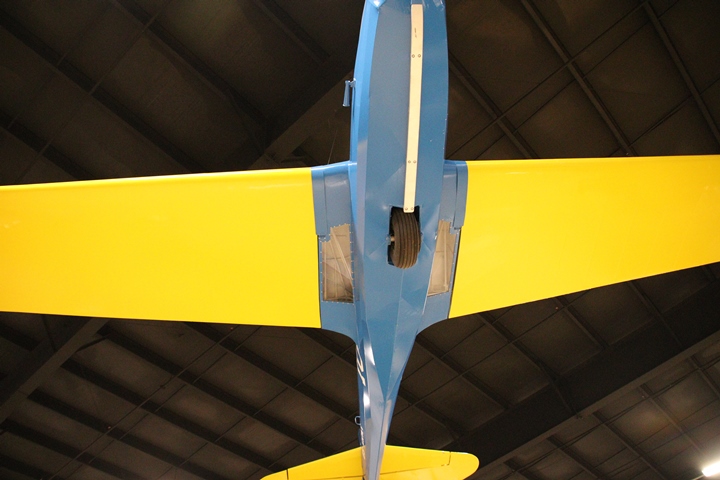
This aircraft is Laister-Kauffman serial
number 92 and was registered as N58189 until de-registered May 2015 when
it was brought to the museum for display. Author's photo.
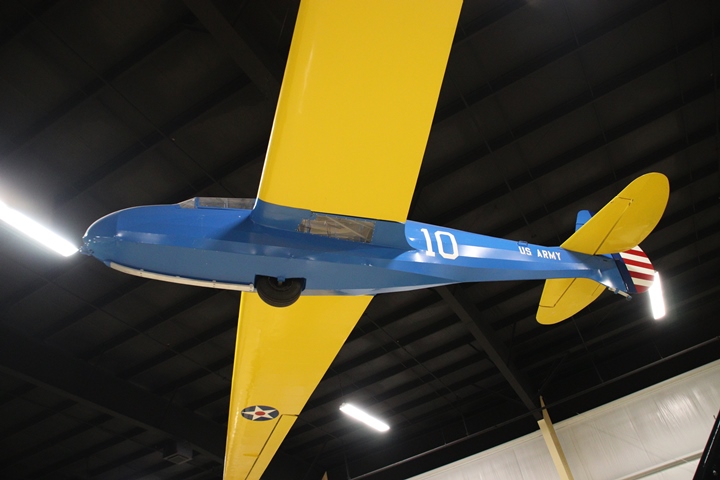
Author's photo.
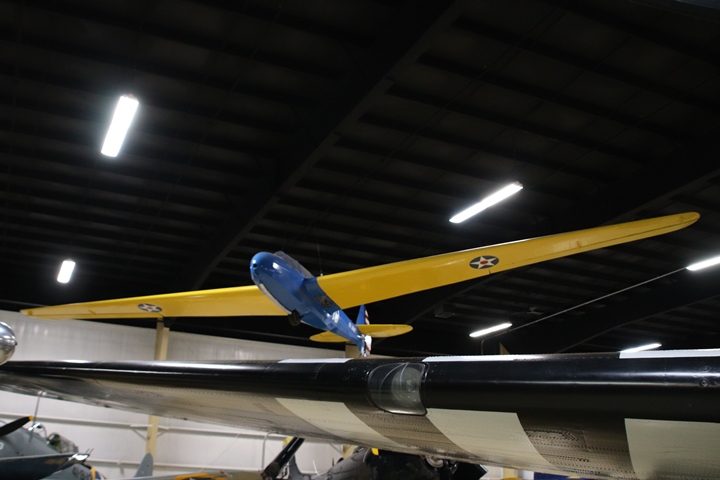
Author's photo.
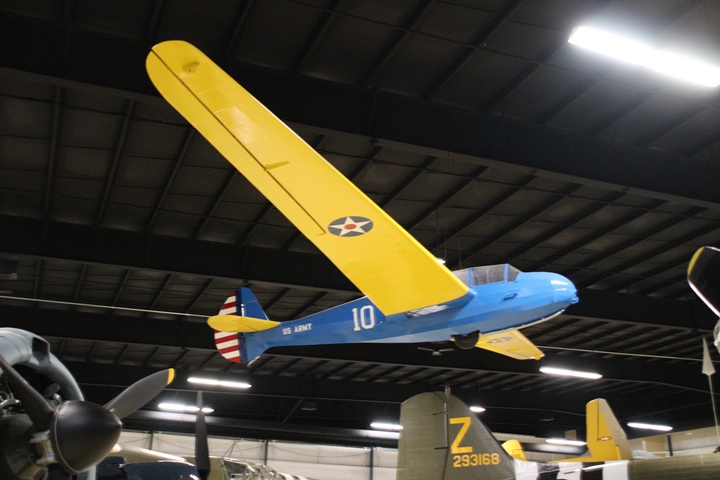
Author's photo.
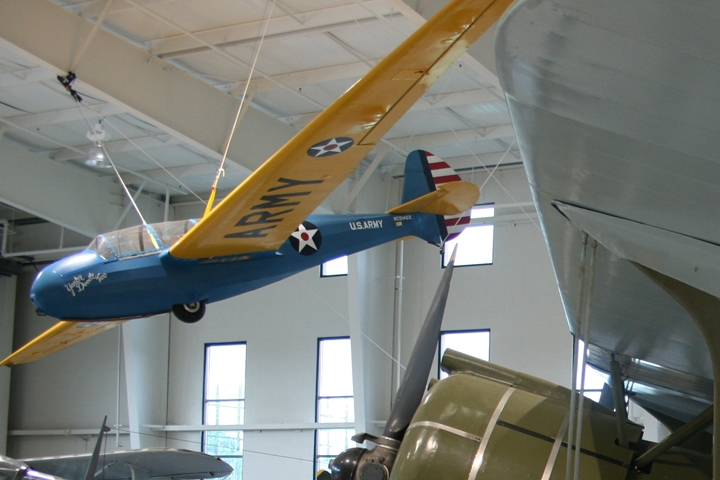
This
1943 Laister-Kauffman TG-4A is company serial number 126 and USAAF
serial number 42-53072. It is on display at the Military Aviation Museum
in Virginia Beach, VA. Author's photo.
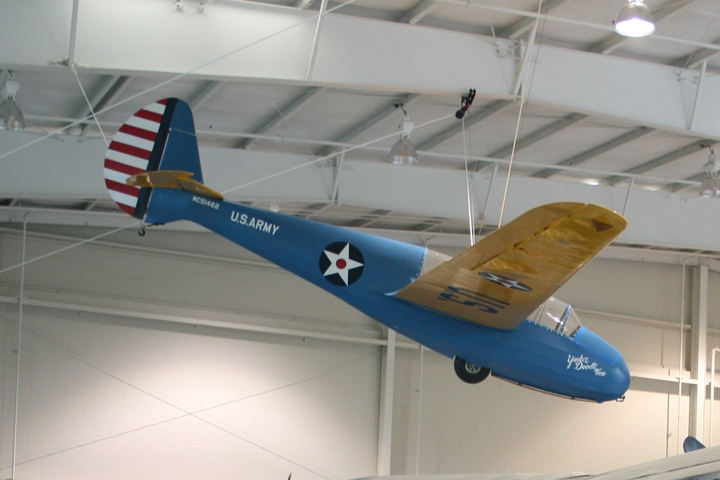
The glider still carries the registration
number N51462 which is good through March 2024. Author's photo.
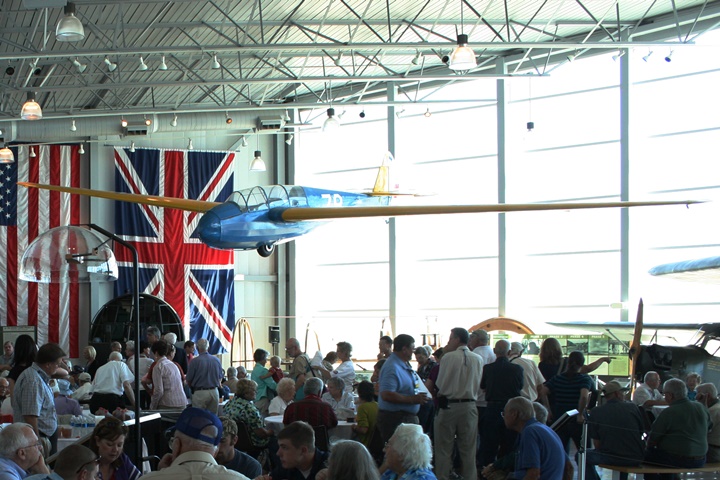
Laister-Kauffman-built TG-4A is company
serial 139. One source gives this as USAAF serial number
42-530727. This is most likely 42-53727. Author's photo.
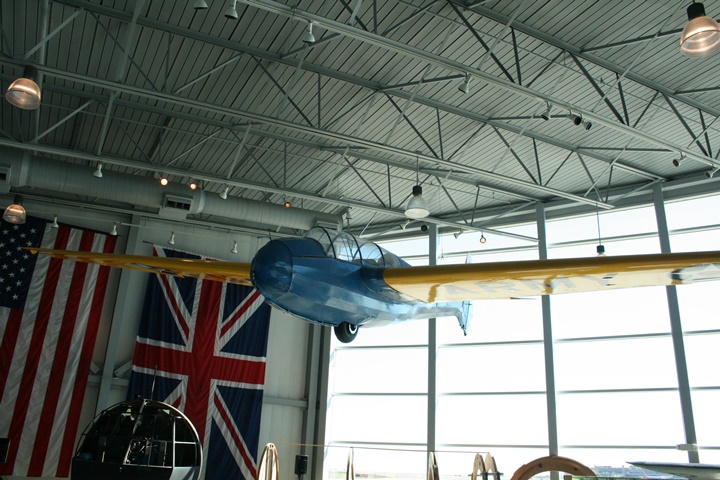
Author's photo.
|
























